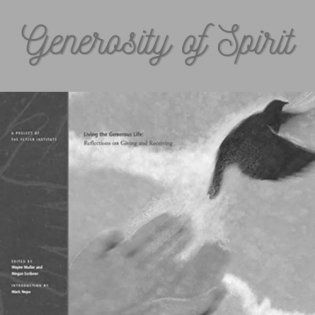European Folktales
Learners analyze characters in five European folktales, particularly female characters. They analyze what small acts of kindness contribute to both the giver and receiver.
The learner will:
- identify the historical and geographic settings of folktales.
- identify the message and connections to philanthropy.
Youth access to these folktales (Learning to Give has permission to make these folktales available online to readers):
- The Fairy Shilling
- The Lute Player
- The Three Fayes
- Where Love Is, God Is
- The Treasure
Learners plan with their family to do a random act of kindness.
- "The Fairy Shilling." Ó hEochaidh, Seán. Fairy Legends from Donegal. Dublin: Comhairle Bhéaloideas Éireann, ©1977. Used with the permission of Professor Ó Catháin and the Folklore of Ireland Council.
- "The Lute Player." Chinen M.D., Allan B. Once Upon a Midlife: Classic Stories and Mythic Tales to Illuminate the Middle Years. New York: Jeremy P.I Tarcher/Perigree Books, ©1993. pp. 74-76. Used with the permission of Allan B. Chinen and Heacock Literary Agency. "We gratefully acknowledge the permissions granted by the following authors, publishers, and authors’ representatives to reprint excerpts from their publications: Heacock Literary Agency, Inc., for "Stubborn Husband, Stubborn Wide, and "The Lute Player," from Once Upon a Midlife: Classic Stories and Mythic Tales to Illuminate the Middle Years by Allan B. Chinen, M.D.; New York: Jeremy P.I Tarcher/Perigree Books, 1993, copyright Allan B. Chinen. All rights reserved."
- "The Three Fayes." Batt, Tanya Robyn. The Fabrics of Fairytales: Stories Spun Far and Wide. New York: Barefoot Books, ©2000. pp. 52-61. Used with the permission of Barefoot Books, Inc: "’The Three Fayes,’ from The Fabrics of Fairytales: Stories Spun Far and Wide, first published in 2000 by Barefoot Books, Inc. Text copyright ©2000 by Tanya Robyn Batt." www.barefootbooks.com
- "The Treasure." Buber, Martin. Tales of the Hasidism: The Later Masters. New York: Schocken Books, ©1948, 1975. pp. 245-246. Used with the permission of the Balkin Agency, Inc., Agent for the Estate of Martin Buber.
- "Where Love Is, God Is." Tolstoy, Leo. 1885.
Instructions
Anticipatory Set:
Look on a map to name the European countries represented in the featured folktales. Discuss the location, features, and people of the countries.
Read "The Fairy Shilling" together and discuss the message and connection to philanthropy.
- Describe Paddy’s character.
- Do you think the woman gave him the shilling as a reward or a trick? Why do you think that?
- Why did Paddy fear the shilling's impact? What do you think that says about Paddy?
Read "The Three Fayes" and discuss the message and connection to philanthropy.
- What is May good at? Do you think she was lazy? Why do you think the fayes come to her rescue?
- Discuss the message and connection to philanthropy.
Read "The Lute Player" and discuss the message and connection to philanthropy.
- Compare the king and queen with a Venn diagram.
- How is the queen's generosity revealed in various ways in the story?
Read the Hasidic folktale "The Treasure" and discuss the message and connection to philanthropy.
- In the story, Rabbi Eisik digs up a real treasure and uses it to build a house of prayer. Imagine that the treasure was only symbolic. What symbolic "spiritual" journey was he on?
Read the Russian folktale "Where Love Is, God Is" together and discuss the message and connection to philanthropy.
- How did the cobbler's character change?
- In what way did his generosity help others and himself?
Discuss the similarities between these folktales and identify the generosity of spirit in each one.
Philanthropy Framework
-
Strand PHIL.I Definitions of Philanthropy
-
Standard DP 05. Role of Foundations
-
Benchmark HS.1 Define the term foundation and describe the types of foundations.
-
-
-
Strand PHIL.II Philanthropy and Civil Society
-
Standard PCS 04. Philanthropy and Geography
-
Benchmark HS.3 Identify and describe civil society sector organizations whose purpose is associated with issues relating to "human characteristics of place" nationally and internationally.
-
-
